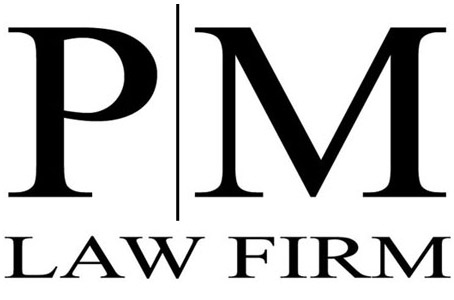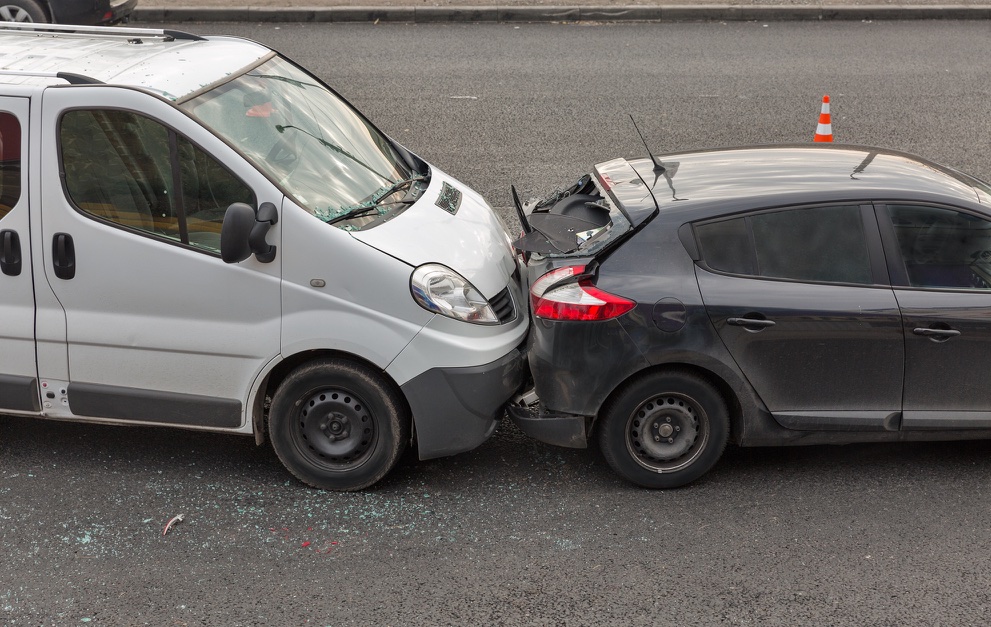Rear-End Collisions in Texas: Who Is at Fault?
Rear-end collisions might seem like a straightforward event: The rear driver hits the car in front, and that’s probably because they were distracted or negligent. But is that always true? And what happens when more than two vehicles are involved? Who’s at fault then?
The truth is that determining fault in a rear-end collision isn’t always that easy. Like with other car accidents in Texas, evidence is key to answering this question. To understand the nuance involved in this problem, car wreck attorney group PM Law Firm has provided a number of tips below.
Why Rear-End Collisions Happen
In Texas, millions of people drive cars every day to get where they need to go, and time is usually of the essence. Even so, it’s mandatory for all drivers to obey traffic rules, including posted speed limits and common sense precautions to protect others on the road. But even under the best of circumstances, accidents can still happen.
Any car wreck lawyer will tell you that driver error is often the cause of an accident, especially with rear-end collisions. Rear-end accidents happen when one car crashes into the one in front of it, and that usually happens after the car in front slows down too suddenly, such as if the lead driver saw a pedestrian in front of them and hit their brakes hard. If the rear driver doesn’t react quickly enough, an accident might happen.
Because most rear-end collisions are due to driver error, it’s all the more important to understand their most common causes and what to do if someone hits your car:
1. Distracted Driving
Every second a driver’s attention isn’t on the road is one that they’re more likely to get into an accident. If they’re distracted by a visual, manual, or cognitive activity, such as:
- Texting
- Using GPS
- Grooming
- Eating
- Daydreaming
They may be at fault in a rear-end collision.
2. Speeding
According to car collision lawyers in Texas, speeding is one of the leading causes of all auto accidents. Speeding is more than breaking the law. It endangers lives; speeding drivers are less able to control their vehicle and react to a situation in time, and the higher speed causes more severe damage.
3. Tailgating
Tailgating means the rear driver is following the lead driver too closely, failing to maintain a minimum safe driving distance. This distance is intended to give rear drivers a chance to react to an unexpected change in circumstances and prevent an accident from happening.
Who’s Usually at Fault in a Rear-End Accident?
As our car crash lawyers can confirm, the law assumes that the rear driver is responsible for causing a rear-end crash. This is because all drivers in Texas have a legal duty to maintain a safe following distance specifically to give them time to stop in case the driver ahead of them suddenly comes to a stop. Failing to do so can cause the rear driver to collide into the lead vehicle, and that can cause them to be found at fault.
Of course, while this is usually the case, there are some exceptions to this rule of thumb. For example, if the driver in front was driving recklessly, under the influence of alcohol or drugs, or suddenly braked without warning or good reason, then the lead driver may be the one who is found at fault. They can also be found liable if their brake lights weren’t working or if they had parked illegally.
This is why a car crash attorney will always recommend investigating even a rear-end collision. Most investigations start with the officer who responded to the crash, and the insurance companies get involved soon after. Getting in touch with an expert can help ensure no potential evidence falls through the cracks.
When the Front Driver May Be at Fault
Rear-end collisions are one of the most common types of accidents in Texas. While it’s usually the result of the rear driver’s actions, this isn’t always the case. For example, mechanical failures, unsafe lane changes, and non-functional brake lights can all absolve the rear driver of liability. So, to protect your rights, it’s worth getting in touch with a rear-end car accident lawyer to help you recover damages and earn rightful compensation.
Here are a few scenarios where the front driver could be at fault:
Sudden and Unexpected Stops
When a lead diver abruptly slams on the brakes without reason, regardless of whether or not they are attempting to “brake check” the rear driver, it can become impossible for the following vehicle to stop safely, causing an unavoidable accident. Fortunately, Texas’ comparative negligence laws allows for more in-depth investigation so that the rear driver isn’t automatically found at fault.
Chain Reaction Crashes
Sometimes, a rear driver who crashes into the car in front of them only did so because the driver behind them pushed them forward. Along with the help of a qualified car collision attorney and reconstruction specialists, it’s possible to determine liability in a multi-car accident or chain reaction crash.
Front Driver Reverses Into Rear Driver
If a driver mistakenly or purposefully shifts into reverse, causing an accident, the rear driver is not at fault. Again, determining liability will require the meticulous gathering of evidence like dashcam footage, traffic camera recordings, and eyewitness statements.
Front Driver’s Brake Lights Are Out
Brake lights are a crucial signal to inform drivers when you’re about to slow down. If the front driver’s lights aren’t functioning properly, the rear driver has no way to know that they should stop to prevent an accident. In this scenario, the front driver is at fault.
Texas and Comparative Fault
Sometimes, a rear-end collision is clearly one person’s fault, and the liability claim becomes completely straightforward. Other times, accidents have shared fault between different parties. Consider the following realistic scenarios:
- One car follows another too closely and causes a collision when the front driver turns without signaling.
- The rear driver is distracted and doesn’t see the front driver stop suddenly and without good reason.
- The front driver’s brake lights are out while the rear driver is speeding.
In each of these cases, more than one party might be responsible for the injuries and damages sustained.
In Texas, you’re entitled to recover compensation for an injury you are partially at fault for as long as your percentage of fault is not greater than the percentage that isn’t your fault. This is more simply referred to as the 51 percent rule, which says that if you’re 51 percent or more at fault for an accident, you cannot get compensation.
If you’re below the 51 percent threshold but still partially at fault, your compensation will be reduced by that percentage of fault. For example, a driver found to be 30 percent at fault may seek compensation from the other driver, but his damages would be reduced by 30 percent. If he had $10,000 in damages, he would only receive a final award of $7,000.
How to Protect Yourself After a Rear-End Collision
After a rear-end collision, move your car to the side of the road or another safe place if possible. If it can’t move, turn on its hazards and move yourself to a safe spot. From there, check yourself for injuries and then check if anyone else needs assistance.
After assessing everyone’s health status, call 911 to report the accident. If there are injuries, they can send help, and it starts the trail of evidence that you may need in a lawsuit or settlement negotiation.
Next, document everything about the accident, including:
- The scene
- Damages to the vehicles
- Witnesses
- License plates
- Vehicle position
- Skid marks
- Debris
- The other driver’s license
- Injuries
Finally, you’ll want to notify your insurance company in a “timely manner,” so don’t delay at all.
Remember, gathering evidence doesn’t stop at the scene. You can always keep collecting new data until the court proceedings, and that’s exactly what you should do to protect yourself. Keep track of any medical bills or other receipts for things you had to pay for because of the accident.
What If You’re Rear-Ended by an Uninsured Driver?
A car accident can be jolting enough, but when the at-fault driver doesn’t have insurance, things get even more complicated. Because Texas is an at-fault state for motor vehicle accidents, how do you get financial compensation for lost wages, medical bills, and other damages?
Like most states, Texas requires insurance that meets a minimum coverage amount. In Texas, that’s:
- $30,000 for physical injury or death per person
- $60,000 for physical injury or death per multi-party accident
- $25,000 for property damage per accident
However, these amounts don’t always fully cover the damages, which is where additional coverage comes in. But uninsured drivers are a special challenge since they don’t have the coverage necessary to compensate the people they’ve injured. To combat this, there is uninsured motorist coverage.
Uninsured motorist coverage is an optional add-on available for auto insurance policies. Texas doesn’t require it, but it’s recommended to add it to your policy due to the prevalence of uninsured drivers in the state; nearly 1 in 12 Texas drivers lack the requisite coverage.
This coverage typically includes:
- Medical expenses
- Lost wages
- Property damage
Why Choose PM Law Firm
Even a minor rear-end collision can lead to complications, making it a good idea to get in touch with a car accident attorney. At PM Law Firm, we specialize in delivering clear and dedicated support to give Texas residents the compensation they deserve, even when liability is under dispute. Contact us today for your free consultation!
FAQs
Who is typically at fault in a rear-end collision in Texas?
Usually, the rear driver following the lead car is at fault because they’re supposed to maintain a minimum safe following distance specifically to prevent unexpected collisions. However, there are exceptions where the front driver is at fault or at least shares it in part.
Are there situations where the front driver can be held liable?
Yes. If the front driver slams on the brakes suddenly and without reason, or to “brake check” the rear driver, then they may be at fault. This is also true for other forms of negligent or dangerous driving, such as driving under the influence or reversing into the rear car.
What is the average payout for a rear-end collision in Texas?
On average, victims of rear-end collisions in Texas can receive a payout anywhere from $15,000 to the hundreds of thousands. The exact amount will vary based on your specific circumstances, with the most severe damage pushing the settlement into the higher end.
Does Texas follow a comparative fault system for accidents?
Yes, a modified version. This is also called the 51 percent rule, which means the driver who is 51 percent or more at fault for an accident cannot get compensation from their insurance for it. Likewise, victims found partially at fault may have their compensation reduced.
What kind of evidence helps prove fault in a rear-end collision?
Photos of vehicle damage, witness statements, police reports, and medical records can all contribute towards understanding the big picture of the rear-end collision. In Texas, evidence may also include a peace officer’s report.
How does insurance handle rear-end collision fault in Texas?
Texas is an at-fault state, which means whoever is at fault in a rear-end collision is liable for paying the victim through their insurance.

